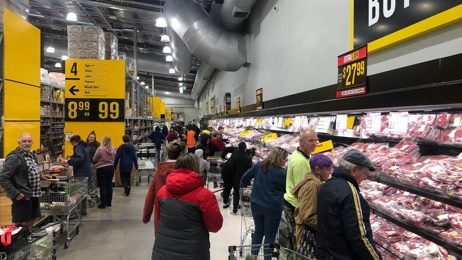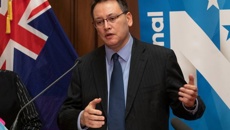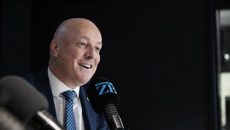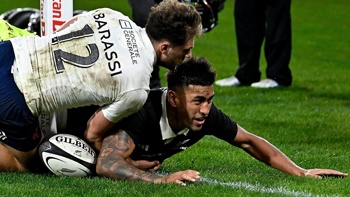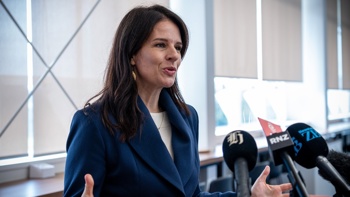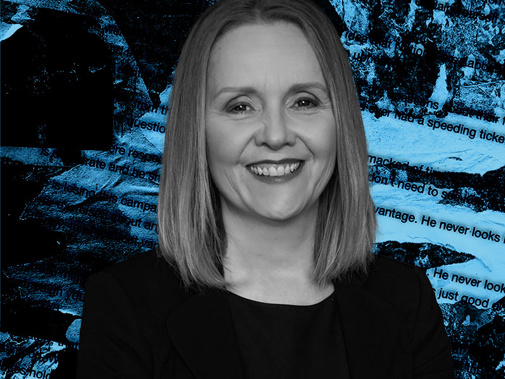
Prime Minister-elect Christopher Luxon promises to sign a trade deal with India in his first term. Trade experts are careful not to be negative Nellies, but most think success within three years is unlikely.
Unlikely doesn’t mean impossible, but achieving his FTA goal in one term would be a another extraordinary achievement, akin to becoming Prime Minister within only one term.
Politics is the art of the possible. Sometimes when political leaders apply sufficient vision, personal leadership and dogged pressure on officials, policy ideas can become a reality.
That’s what is needed to get this trade deal done. It will take more than trade mission bonhomie and congratulatory tweets from Prime Minister Modi to undo the diplomatic missteps of the previous government.
New Zealand and India began trade negotiations in 2010. Momentum was built by Prime Minister John Key’s trade mission in 2011. It was a coordinated effort between government and business. The attendance of much-loved cricket legend Stephen Fleming drew rock star level attention in India.
The follow-up Prime Ministerial trade delegation with Brendon McCullum in 2016 was also a sensation. John Key didn’t mind a jot that the cricket stars got more attention than a Prime Minister. He understood marketing and how to use the best New Zealand had to offer to build rapport and add the sizzle to his free trade deal campaign.
The trip was a success. It resulted in a joint statement with Prime Minister Modi pledging a “commitment to continue working towards a high-quality comprehensive and balanced bilateral Free Trade Agreement which would deliver meaning commercial outcomes to both sides”.
Behind the scenes, however, the negotiation had hit a Taj Mahal sized impasse – dairy access and the hefty tariffs on milk powder.
The first Ardern government tried to find a way forward. Minister for Foreign Affairs Rt Hon Winston Peters launched a “India New Zealand 2025” plan. It was a comprehensive strategy for advancing shared interests, stronger cultural connection and increasing engagement. Tangible goals included building a network of Honorary Consuls in India, frequent high-level government visits and more deliberate engagement between government academics and other organisations. The stand out goal was “improve market access and remove trade barriers including through a regional or bilateral Free Trade Agreement”.
It was a strong plan not dissimilar to the one followed by Australia, which has resulted in their successful trade agreement.
Unfortunately, the second Ardern government saw the New Zealand India diplomatic relationship nosedive in terms of export dollars and energy.
The nadir was a New Zealand visit from India’s External Minister Jaishankar in October 2022. During his five day visit he and Minister Nanaia Mahuta met for one hour. The meeting went badly because New Zealand was tone deaf to India’s request to renew visas for students locked out during Covid who could not return to finish their courses.
The fallout out from the meeting was significant. Minister Jaishankar’s plea was barely reported in New Zealand, but ran in India’s news media for the full five days of his visit.
It the trade negotiation process was on life support before the visit, the combination of poor hosting and refusal to fix the visa problem switched of the machine.
The free trade agreement dream of 13 years earlier was now “not a priority” for either country, according to Minister Mahuta. When the language of joint diplomatic press conferences is usually friendly and optimistic, it was extraordinarily blunt.
In the absence of government leadership, the business community stepped up. The recent 50-strong business delegation led by Auckland Business Chamber CEO Simon Bridges and the Indian New Zealand Business Chairman Michael Fox is a good example of business leaders continuing to invest in New Zealand’s relationship with India.
Whatever the status of the process, it will take a super-charged effort to get an India New Zealand trade negotiation “back on track”, to use the National Party mantra.
A refreshed strategy and combined effort from government, officials, business and local Indian community is worth the slog.
There is much to gain for both countries from a deeper trade relationship. India has the largest population in the world, overtaking China for the first time this year. The growing middle class wants better food, education and consumer goods. New Zealand already exports logs and wood products, fruit and education services to India valued at around $1.1 billion and there are more opportunities. India exports about the same value to New Zealand meaning genuine two-way trade.

Local businesses have had India on their market radar for decades, but know it’s a long term investment in relationships. India is many countries in one. It’s a vast, complex and challenging market. There are trade barriers, intellectual property challenges, supply chain complexities and concerns about corruption. Even the multinationals struggle and find that systems that work everywhere else around the world can fail in India. As McKinsey advises “learning to do business the Indian way” is the key.
The diplomatic missteps of the former government means new Ministers have work to do, but they are not starting from scratch. New Zealand diplomatic officials in India continue to make major progress building relationships and maintaining ties. High
Commissioner David Pine and his team should be amongst the first to brief the Prime Minister on the state of the relationship and what it will take to make progress.
A renewed attempt to secure a deal is going to take investment and regular high-level engagement. New Zealand’s strategy must be more than “let’s have another trade mission”. Rebuilding the FTA campaign will mean more people on the ground, more events, more meetings and regular missions.
To achieve a deal in one term the Prime Minister needs to create a movement built from his caucus, his Ministers, the Parliament, business representatives, Indian Kiwis, government officials and those with star power, our cricketers.
The strategy needs to plan for that predictable pothole - dairy access.
Former Minister of Trade Hon Damian O’Connor, believed New Zealand could “not consider an FTA without dairy being incorporated and the Indians would not accept one with it being incorporated”.
New Zealand needs to be realistic that short of a miracle commodity dairy access will not feature. The odds on a deal that includes dairy are miniscule. Bigger economies with leverage including the European Union, United States, United Kingdom and Australia have all failed to get concessions for commodity dairy products.
Foreign Affairs has said, “it is impossible to for New Zealand to do an FTA that does not include dairy”, but this is not true. A trade deal with wins for other sectors without dairy is entirely possible as proven by Australia.
If the goal is a trade deal with India, it’s a choice Prime Minister Luxon will need to make.
India’s position is entirely predictable and it’s immovable. Liberalising dairy market access is a lose-lose political issue for Prime Minister Modi. India has 80 million dairy farmers and that around 80% of those farms have just one to five cows. He regularly makes clear that strengthening India’s dairy sector is one of the his top priorities. All politics is local and no repetition of the economic benefits of global dairy trade by New Zealand is going to shift his view.
To succeed New Zealand needs to reframe its definition of what constitutes a high quality trade agreement and look to areas where both countries can build on their trading relationships. Areas suggested so far are in aviation, defence, horticulture, education and products where there is not the same political sensitivity and entrenched protectionism.
If there are export gains to be made for other significant parts of the New Zealand economy, a trade deal with India will be beneficial. The Aussies had the same challenges as New Zealand but saw past their lack of progress on dairy to win gains for meat, seafood, wine, some fruits and nuts. There were even some areas of dairy where India was prepared to consider liberalisation. Reduced tariffs for infant formula at a later date
is part of the Australian deal. While some New Zealand commentators have been critical of the Aussie deal, a trade deal in the hand is worth two in the bush.
The new government has a lot of work ahead. An India New Zealand free trade agreement is an Everest-level climb, but with the right support from officials and business, Prime Minster Luxon might just surprise trade experts and reach the summit within 3 years. As Sir Edmund Hillary once said, “people do not decide to become extraordinary, They decide to accomplish extraordinary things”.
Take your Radio, Podcasts and Music with you



